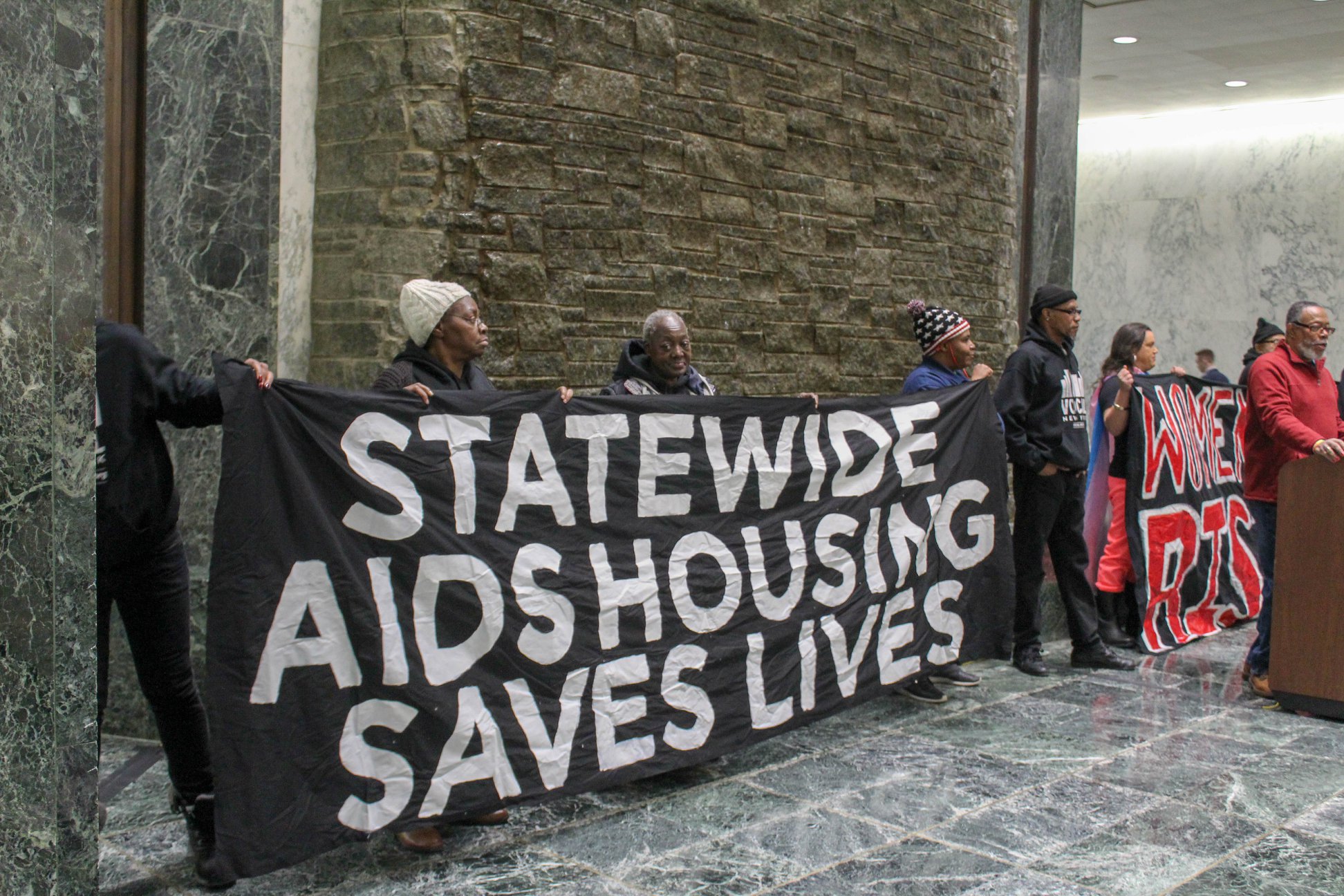On December 1, World AIDS Day, a coalition of HIV/AIDS advocates is rallying in downtown New York City, calling for the expansion of housing support for low-income HIV/AIDS patients. They are drawing attention to the fact that in New York, efforts to end HIV/AIDS won’t succeed unless we also address the homelessness and overdose crises.
“Stigma is the most dangerous component [of living with HIV/AIDS],” Ruwi Shaikh, HIV/AIDS campaign coordinator for VOCAL-NY, told Filter. “Even though we have reached the target in terms of treatment in NYC, stigma has not gone anywhere. When it comes to homophobia or transphobia or using drugs, these are stigmas we have not tackled. It’s making it exponentially harder for people to receive treatment or get housing.”
The protest comes as the state government has pushed back its goal to end the AIDS epidemic—from an original target of 2020 to 2024, as Governor Kathy Hochul’s office announced on November 30.
“New York State was on track to end the epidemic by the end of 2020, with outcomes measuring Ending the Epidemic progress available by December 2021,” reads a report from the state health department. “However, the State and providers on the frontline have spent the majority of 2020 and early 2021 responding to an unprecedented pandemic and will continue to do so for the foreseeable future.” It cites decreases in HIV testing, treatment and other related services caused by COVID-19 disruptions.
New York’s Blueprint, Missed Targets and Disparities
In June 2014, then-New York Governor Andrew Cuomo first announced its “Blueprint to End the AIDS Epidemic.” Its goal was to achieve a decrease in the state’s HIV prevalence by the end of 2020. In the same week, Cuomo struck a deal with three major HIV medicine manufacturers to make treatment more affordable for New Yorkers. The moves came after decades of grassroots HIV/AIDS activism in New York.
The Blueprint involves finding people with previously undiagnosed HIV and connecting them to care, then helping them stay connected to treatment on anti-retroviral therapy. ART consists of daily medicine to suppress HIV in the body. When successful, the virus becomes undetectable by blood tests and cannot be transmitted to others.
The state must also help at-risk people get the pill for Pre-Exposure Prophylaxis (PrEP), which helps protect them from contracting HIV. In New York State, Medicaid and other private health insurance covers the cost of PrEP. There is financial assistance for low-income and uninsured patients, but it doesn’t cover the full cost.
In December 2019, the New York City health department announced it had met an important United Nations target, two years ahead of schedule:“90-90-90.” The target refers to 90 percent of people living with HIV knowing their status; 90 percent accessing ART; and 90 percent on ART remaining virally suppressed. New York City was the first US city to reach this goal.
New York State has set slightly different targets for these metrics. But as yet, it hasn’t hit its targets for people knowing their HIV status, receiving ART treatment or being virally suppressed.
New HIV diagnoses in the state decreased 45 percent between 2009-2019. Of over 107,000 New Yorkers who live with HIV, 22 percent reside outside of NYC.
Statewide, Black and Hispanic residents are respectively 9.7 times and 6.3 times more likely to receive new HIV diagnoses than white residents.
The Needs of Unhoused People and Drug Users
Last year, a cluster of new HIV cases was reported in upstate Monroe County, home to the city of Rochester. The outbreak was attributed primarily to the sharing of needles for drug use, and disproportionately affected Black and Hispanic residents.
But while the state health department’s recommendations included expanding access to sterile syringes, Cuomo’s administration was cutting or denying payments to syringe providers throughout the state. The cuts seem to have been linked to decreased state tax revenues caused by the COVID-19 pandemic. The weakening of harm reduction programs is among the more shameful parts of the Cuomo’s legacy.
His successor, Governor Hochul, has taken several steps to reduce harms for people who inject drugs, including decriminalizing syringe possession statewide.
VOCAL-NY and other advocates are rallying to remind Gov. Hochul that ending HIV/AIDS goes hand-in-hand with ending homelessness. Her AIDS efforts should include, they demand, passing the PATHS Bill (Point of Access to Housing and Services).
The legislation would ensure benefits and services for people living with HIV/AIDS throughout the state. It would also expand rental assistance and rent controls, plus nutrition and transportation benefits, to low-income New Yorkers with HIV/AIDS. The kinds of benefits granted by PATHS are already offered by New York City through its HASA program.
NYC shelter residents are more than twice as likely to receive an HIV diagnosis compared to the housed population. And at this moment, New York City has more unhoused people than at any point since the Great Depression. Making sure that people living with HIV/AIDS stay stably housed means they are overall healthier and have the stability to receive regular treatment.
Shaikh is cautiously optimistic that Hochul will do what Cuomo wouldn’t. “It is positive that she is very much aligned with the overdose crisis [goals],” she said. “I think she’s determined to end that epidemic, and that’s very much interrelated with the AIDS epidemic.”
Photograph of a 2019 demonstration at the New York State Capital by VOCAL via Facebook.




